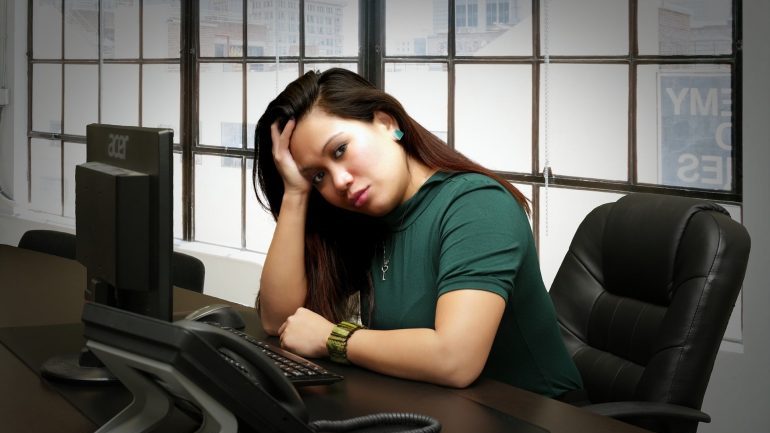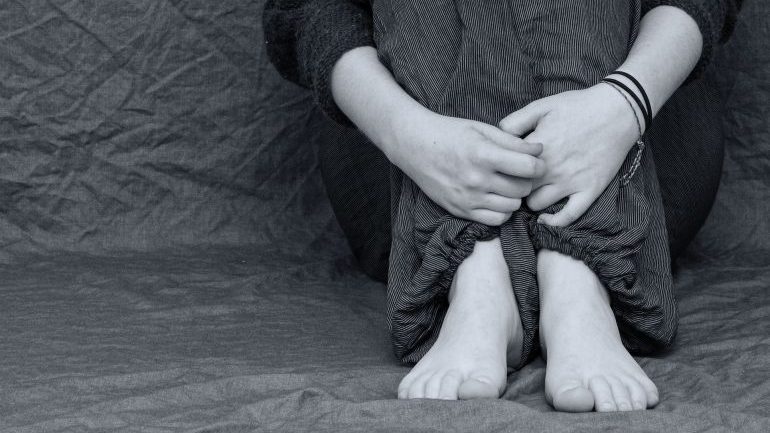33 Worrisome Anxiety Statistics and Facts for 2024
written by / January 2, 2022
Everybody worries from time to time. However, if you feel constant worry or fear about everyday situations, you may suffer from an anxiety disorder. Many people disregard this condition believing that they—or their loved ones—simply worry too much. But anxiety disorders are, in fact, the most common mental disorder in the US according to the latest anxiety statistics.
Fortunately, they can be treated like any other medical condition. Still, the majority of people experiencing anxiety symptoms don’t receive adequate treatment, and their excessive worry interferes with their daily lives.
The Most Worrisome Anxiety Statistics
- Due to COVID-19, 53% of adult Americans claimed that their mental health had been negatively affected in 2020.
- People sheltering-in-place reported higher levels of stress and worry (47%) over COVID-19 than people who were not sheltering-in-place (37%).
- Anxiety disorders affect 40 million US adults every year.
- 31.2% of Americans experience an anxiety disorder at some point in their lifetime.
- Over 90% of people with generalized anxiety disorder have another psychiatric diagnosis as well.
- 19 million Americans suffer from specific phobias.
- 6.8 million US adults have generalized anxiety disorder (GAD).
- About 31% of US adolescents suffer from an anxiety disorder.
- 14% of people in the European Union suffer from an anxiety disorder.
- Up to 90% of people with generalized anxiety disorder have difficulty concentrating.
COVID-19 Anxiety Statistics for 2024
A global pandemic of COVID-19 has caused rising rates of anxiety and depression throughout the world.
1. Due to COVID-19, 53% of adult Americans claimed that their mental health had been negatively affected in 2020.
(Kaiser Family Foundation)
This information is from a KFF tracking poll that happened in the middle of July in 2020. It looked at the effects of the global pandemic on the mental health of ordinary people.
2. People sheltering-in-place reported higher levels of stress and worry (47%) over COVID-19 than people who were not sheltering-in-place (37%).
(Kaiser Family Foundation)
From March 2020, people in certain areas were told to stay at home to help prevent the spread of COVID-19.
3. Isolation due to social distancing can cause or increase feelings of stress and anxiety in people.
(CDC)
It’s likely that depression and anxiety statistics for 2020 will look different to other years due to the pandemic and the fear that can come with a global disaster.
Prevalence of Anxiety Disorders
How common are anxiety disorders? Here, we look at how many people suffer from anxiety in their everyday lives.
4. Anxiety disorders affect 40 million US adults every year.
(ADAA)
In other words, according to anxiety disorder statistics, they affect about 18% of the US population each year, which makes them the most common type of mental illness in the US.
5. 31.2% of Americans experience an anxiety disorder at some point in their lifetime.
(Harvard Medical School)
According to the National Comorbidity Survey, almost a third of US adults suffer from one of the following anxiety disorders: panic disorder, generalized anxiety disorder, agoraphobia, specific phobia, social anxiety disorder (social phobia), post-traumatic stress disorder, obsessive-compulsive disorder, or separation anxiety disorder.
6. Generalized anxiety disorders are more prevalent in wealthier countries.
(Medical News Today)
Based on generalized anxiety disorder statistics, 5% of people have this mental disorder in high-income countries compared to 1.6% in low-income countries.
7. The sales of books about anxiety increased by 25% in only one year.
(CNBC)
According to the largest US book retailer, Barnes & Noble, this huge surge marked the period from 2017 to 2018. It seems there’s been a recent increase in the number of people who want help for their anxiety disorders.
8. 41% of employees experience workplace anxiety.
(Anxiety Centre)
A recent study found that high levels of anxiety in the workplace can considerably decrease job performance.
9. Over 90% of people with generalized anxiety disorder have another psychiatric diagnosis as well.
(The Recovery Village, ADAA)
Depression statistics show that major depressive disorder is the most common co-occurring mental health problem. In fact, Almost 50% of people suffering from depression also suffer from an anxiety disorder.
10. People are more likely to have an anxiety disorder if they have a family member with this mental problem.
(Medical News Today)
Genetic predisposition is just one of the risk factors for developing an anxiety disorder. As most anxiety facts indicate, other risk factors include a traumatic experience, drug or alcohol use, other medical conditions, and environmental factors.
Types of Anxiety Disorders
In this section, we’ll be exploring the different types of anxiety disorders that exist.
11. 19 million Americans suffer from specific phobias.
(ADAA)
This type of anxiety disorder affects about 8.7% of US adults. Specific phobias usually involve irrational fear of insects, germs, heights, or flying.
12. 15 million US adults suffer from social anxiety disorder.
(ADAA)
Social anxiety statistics show that social phobia or social anxiety disorder affects about 6.8% of Americans, and it’s equally prevalent among both men and women. A 2007 ADAA survey revealed that 36% of people with SAD ask for professional help only after 10 years of experiencing symptoms.
13. 2.2 million Americans suffer from obsessive-compulsive disorder (OCD).
(Anxiety Centre)
OCD is often classified as an anxiety disorder and is equally prevalent among men and women.
14. 6.8 million US adults have generalized anxiety disorder (GAD).
(ADAA)
People suffering from GAD feel constant and excessive worry. Anxiety disorders and the statistics associated with them indicate that only about 43% of them are being treated.
15. Panic disorder affects about 6 million people in the US.
(Anxiety Centre)
This mental disorder often co-occurs with depression. Women are twice as likely to suffer from this disorder as men.
16. Post-traumatic stress disorder affects about 7%–8% of the US population.
(National Center for PTSD)
About 8 million US adults suffer from post-traumatic stress disorder (PTSD) every year. PTSD is more common among women. Anxiety stats show that about 10% of women experience PTSD in their lifetime compared to about 4% of men.
17. 2% of US adults suffer from agoraphobia.
(American Psychiatric Association)
Typically, people with agoraphobia are afraid of public places, crowds, waiting in line, open spaces, and enclosed spaces, such as elevators.
18. 1%–2% of US adults have separation anxiety disorder.
(American Psychiatric Association)
People with a separation anxiety disorder fear leaving their home or being separated from loved ones, e.g., their partners, parents, or siblings. Having studied anxiety in adolescent patients, statistics show that 1.6% of adolescents suffer from this type of anxiety disorder.
Anxiety Disorders Across Different Demographics
Who suffers from anxiety? Here, we’ll be focusing on the demographics that experience anxiety disorders the most.
19. More women than men suffered from an anxiety disorder in the past year.
(Harvard Medical School)
According to the National Comorbidity Survey, 23.4% of women experienced an anxiety disorder in the previous year, compared to 14.3% of men.
20. About 31% of US adolescents suffer from an anxiety disorder.
(National Institute of Mental Health)
The National Comorbidity Survey estimated the prevalence of anxiety disorders among Americans aged 13–18. Teenage anxiety statistics indicate that anxiety disorders are more prevalent among female teenagers (38%) than male teenagers (26%).
21. Around one in eight children suffers from an anxiety disorder.
(ADAA)
Children with anxiety disorders can miss out on many of the joys of childhood because of their anxiety.
22. 4% of children suffer from separation anxiety disorder.
(ADAA)
This type of anxiety disorder most commonly affects kids aged 7–9. For younger children aged 18 months to 3 years, it’s normal to feel anxious when a parent goes out of sight.
Anxiety Statistics Worldwide up to 2022
In this section, we’ll be looking at anxiety around the world and how it’s experienced globally.
23. In 2015, 264 million people in the world had an anxiety disorder.
(World Health Organization)
Based on the WHO’s estimates from 2015, the number of people with anxiety disorders accounted for about 3.6% of the global population. They were more common among women than men.
24. 14% of people in the European Union suffer from an anxiety disorder.
(European Neuropsychopharmacology)
According to the report on the prevalence of mental disorders in Europe, anxiety disorders are the most common.
25. The most common mental disorder in the UK is a combination of anxiety and depression.
(No Panic)
According to anxiety statistics in the UK, 7.8% of Britons suffer from these two mental disorders. Moreover, in 2013, about 8.2 million people experienced anxiety in Great Britain.
Symptoms of Anxiety Disorders
How do you know if you suffer from anxiety? Here, we’ll be discussing the symptoms that come with anxiety disorders.
26. Up to 90% of people with generalized anxiety disorder have difficulty concentrating.
(Healthline)
A recent study indicates that difficulty concentrating can be used as a diagnostic criterion.
27. 74% of children and adolescents with anxiety disorders experience restlessness.
(NCBI)
This is the most common somatic symptom of anxiety disorder in children, which is followed by stomachaches (70%) and blushing (51%).
28. Anxiety can lead to sleeping problems.
(National Sleep Foundation)
However, most facts about anxiety indicate that lack of sleep can also lead to an anxiety disorder. Research shows that chronic insomnia increases the risk of developing an anxiety disorder. Fortunately, there are a number of ways you can relieve stress and anxiety, from playing relaxing music to meditating to exercising. It’s vital to improve your sleep quality since sleep deprivation can have a range of negative effects on your mental and physical health.
Treatment of Anxiety Disorders
There are various ways in which to treat anxiety. Considering a growing prevalence of anxiety disorders, it’s important to know that these treatments can be effective in dealing with anxiety.
29. Psychotherapy is the most successful treatment with a recovery rate of about 57%.
(The Recovery Village)
Medications are another generalized anxiety disorder treatment option. There is also a wide range of alternative treatments, which are usually used in combination with psychotherapy and medication. They include herbal supplements, relaxation techniques, yoga, and acupuncture.
30. Only about a third of people with an anxiety disorder receive treatment.
(ADAA)
According to the ADAA, only about 36% of people with an anxiety disorder get treated, although there are a number of treatment options.
31. Over half of college students asked for help for their anxiety problems.
(Anxiety Centre)
According to research on anxiety in college students and statistics analysis, anxiety can negatively affect learning. This can result in lower academic achievement and performance.
32. Anxiety disorders incur an annual cost of over $42 billion for the US.
(Anxiety Centre)
These costs account for almost a third of the total mental health costs in the US. About half of this amount, over $22 billion, is spent on healthcare services because people suffering from anxiety disorders are 3–5 times more likely to visit a doctor than people without an anxiety disorder. Additionally, they are six times more likely to be hospitalized for psychiatric disorders.
33. CBD oil can do wonders for anxiety.
(TreatingYourself.com)
Cannabidiol has been all the rage in recent times. It is claimed that it can be beneficial for a diverse range of symptoms. One of its most popular uses is for treating anxiety. But is it really as good as the hype says? The answer seems to be – yes, it is! Several studies have confirmed that CBD has reduced anxiety levels in people who took it, as compared to the control group that was given a placebo.
The Bottom Line
Anxiety disorders affect people from all walks of life. Looking at the anxiety statistics, it seems that this mental disorder is becoming more and more prevalent. However, we can’t pinpoint the single reason why we see an increased incidence of anxiety issues. Some blame social media, while others claim that nowadays, we lead more stressful lives.
Whatever the reason, it’s important to know that a number of effective treatment options can help you deal with your anxiety. So if you feel your worries are getting out of control or your anxiety affects your everyday activities, it’s best to seek professional help.
Table of Contents
The Most Worrisome Anxiety Statistics
COVID-19 Anxiety Statistics for 2024
Prevalence of Anxiety Disorders
Types of Anxiety Disorders
Anxiety Disorders Across Different Demographics
Anxiety Statistics Worldwide up to 2022
Symptoms of Anxiety Disorders
Treatment of Anxiety Disorders
The Bottom Line











